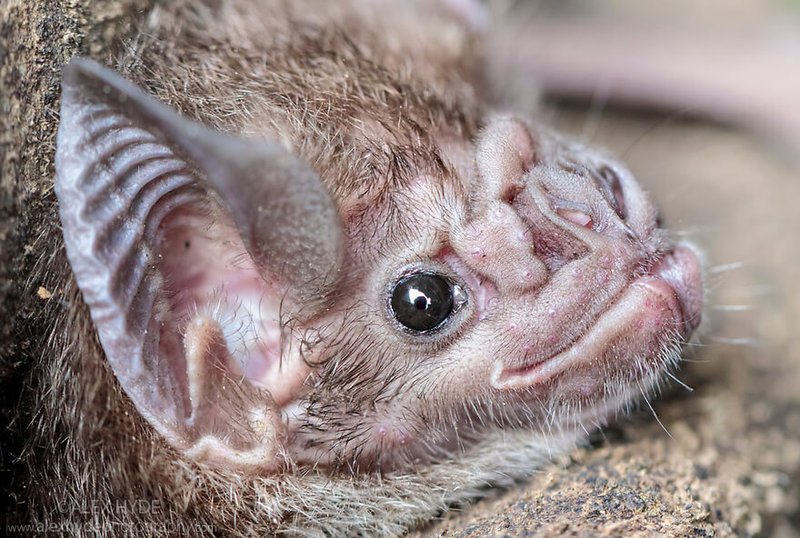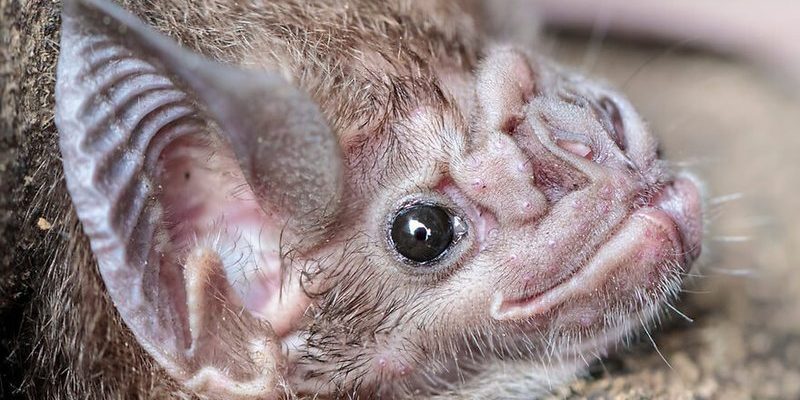
There are three species of vampire bats, but the most famous one is the common vampire bat (*Desmodus rotundus*). These small mammals have a fascinating life that revolves around their diet of blood. While that might sound gruesome, it’s essential to understand their ecological role. So, let’s unwrap some of the most interesting and surprising facts about vampire bats that will change how you view these winged wonders forever.
1. They Drink Blood, Not Just for Fun
You might be wondering why vampire bats drink blood in the first place. Honestly, it’s not just for kicks. Blood is a nutrient-rich food source, providing essential proteins and vitamins. Think of it like a buffet for these bats, where they can feast without having to hunt multiple prey.
Vampire bats have specially evolved traits that allow them to consume blood effectively. Their teeth are sharp, but they’re not used to tear flesh. Instead, they make a small incision in the skin of their host and use an enzyme in their saliva to prevent the blood from clotting. This way, they can enjoy their meal without interruption. Fascinating, right?
2. They Prefer Certain Hosts
Not all animals are fair game for vampire bats. These bats typically prefer warm-blooded animals like cattle, horses, and other mammals. They’re attracted to hosts that have high blood flow because it makes feeding easier. Imagine if you were at a party searching for the most popular snacks—vampire bats operate in a similar way!
The bats often use their keen sense of heat and smell to find their next meal. They can detect the warmth of a potential host from a distance, like how we can smell delicious food cooking in the oven. This specialized hunting technique is just one of the many adaptations these bats possess.
3. They Have a Unique Social Structure
Unlike many other bat species, vampire bats are highly social creatures. They live in groups, often forming close relationships within their colonies. If a bat doesn’t feed well one night, its friends might share a meal with it. They’ve been known to regurgitate blood to help their buddies out—now that’s friendship!
This behavior is essential for their survival, especially since not every bat always finds food. Their social bonds reinforce cooperation, making them incredibly fascinating from a behavioral perspective. The vampire bat’s social interactions can teach us a lot about altruism in the animal kingdom.
4. They Can’t Survive Without Blood
You might be wondering how often they feed. Vampire bats need to eat almost every night; otherwise, they can starve. Just one meal of blood doesn’t cut it for them. If a bat goes without feeding for more than two days, it can become weak and may even die.
This reliance on blood makes them vulnerable, especially in areas where their food sources are scarce. They have adapted to survive by being stealthy and efficient feeders, allowing them to thrive in their specific environments.
5. Their Role in the Ecosystem
While vampire bats may seem like bloodsuckers with a bad reputation, they actually play a critical role in their ecosystems. Their feeding habits help control the populations of their hosts. By feeding on animals, they can help maintain the health of these populations, ensuring a balance within their environment.
Moreover, their saliva has been studied for its medicinal properties. Scientists are exploring how the anticoagulants in their saliva could help with human medicine, particularly in preventing blood clots. So, in a way, these seemingly scary creatures might have the potential to save lives!
6. Their Habitat and Distribution
Vampire bats primarily reside in Central and South America, thriving in tropical and subtropical regions. They prefer habitats where they can easily find hosts, like near livestock farms. Imagine wandering through lush jungles or past open pastures, and you might just spot one of these bats flitting about as night falls.
Though they are often associated with darkness, vampire bats actually prefer to feed during the night and rest during the day in tree hollows or caves. This nocturnal lifestyle keeps them hidden from predators and helps them remain undetected by their unsuspecting hosts.
7. They Have Unique Feeding Habits
Feeding for vampire bats is quite a process. They usually prefer to feed during the night, when it’s cooler and their hosts are less active. Often, they land quietly on their target, keeping their approach stealthy. Once they find a suitable spot, they use their sharp teeth to make a small incision and begin to feed.
It’s also worth mentioning that vampire bats have a remarkable ability to sense their host’s heartbeat. This skill allows them to locate blood vessels easily, making the feeding process more efficient. Picture a finely tuned instrument playing a beautiful melody—that’s how precise their feeding techniques are!
8. They Can Fly at Impressive Speeds
Vampire bats may be small, but they can fly surprisingly fast. With a wingspan of around seven to eight inches, these bats can reach speeds of up to 30 miles per hour. This agility is critical for their survival, allowing them to evade predators and quickly find food.
Their lightweight bodies and strong muscles give them the ability to maneuver easily through the air. It’s like watching a skilled dancer move gracefully across the stage—only the stage is a jungle, and the dance is all about survival!
9. They Can Establish Long-term Relationships
Many animal species exhibit fleeting interactions, but vampire bats can form long-lasting bonds. They often roost with the same companions night after night, showing loyalty to their social group. This connection isn’t just about companionship; it’s also about survival.
When a bat is in need, its friends will often come to the rescue. This loyalty creates a sense of community among them, building a network that benefits everyone in the colony. It’s a heartwarming reminder that even in the animal world, friendships matter.
10. Their Conservation Status
While vampire bats might seem like they’re thriving, they face threats just like many other species. Habitat loss, climate change, and fear of diseases like rabies can impact their populations. Interestingly, their reputation as bloodsuckers often leads to negative attitudes towards them, resulting in persecution from humans.
Conservation efforts are important to understand and protect these creatures, ensuring that they continue to play their role in the ecosystem. Supporting local wildlife initiatives and spreading awareness can help maintain the balance of nature that these unique bats contribute to.
In conclusion, there’s much more to vampire bats than their spooky reputation suggests. These creatures are complex, sociable, and crucial to their environment. The next time you hear about vampire bats, remember—they’re not just bloodsuckers; they’re fascinating animals with a vital role in our ecosystem. So next time you sip your coffee, think about the astonishing adaptations that allow these bats to thrive!

